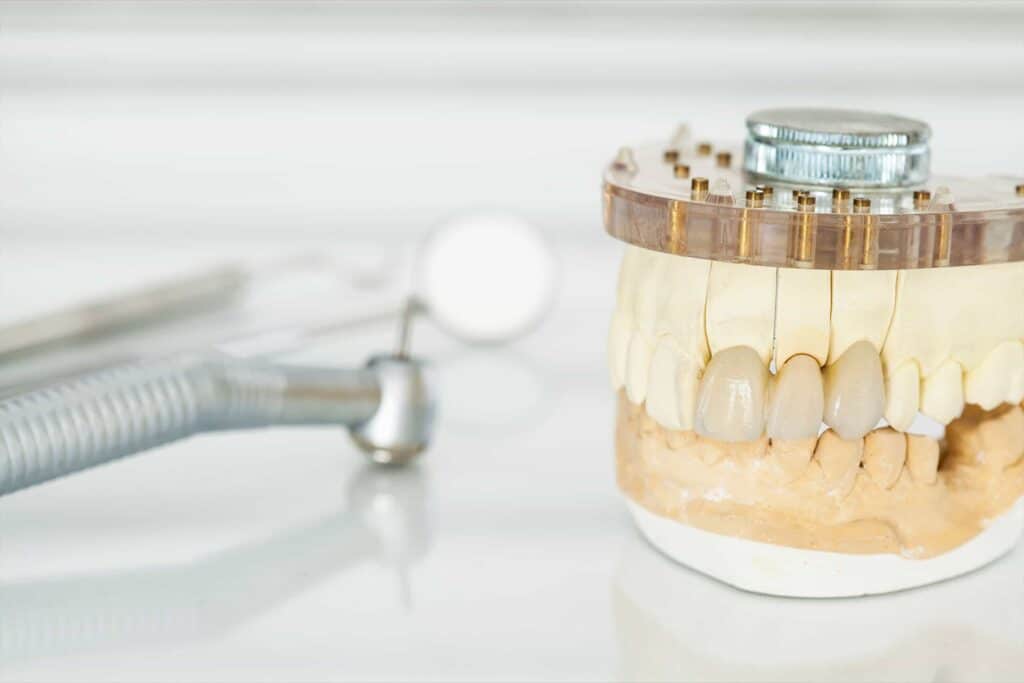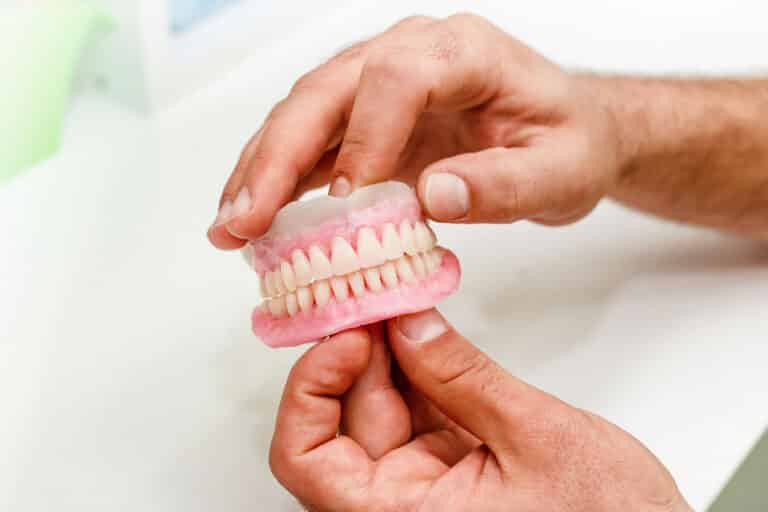Clear aligners are gaining popularity as a highly effective solution for malocclusion, a condition that affects hundreds of millions globally. This condition results in varying degrees of misaligned teeth; some individuals have visibly crooked teeth while others may only experience misalignment when closing their jaws. Orthodontics, especially the emerging option of clear aligners, provides a treatment plan for achieving straighter teeth, no matter the extent of misalignment.
Straightening teeth is often desired for esthetic reasons, which is a common motivation for seeking orthodontic treatment. However, beyond esthetics, straightening teeth offers a multitude of health benefits. It facilitates a more balanced bite and results in teeth that are easier to clean and accumulate less plaque, enhancing overall oral health and longevity.
Before the advent of clear aligners, traditional metal braces were the go-to method for orthodontic treatment. Yet, the introduction of clear aligners has revolutionized the field, offering an attractive and convenient alternative to metal braces. While metal braces may carry certain negative perceptions, clear aligners offer an appealing esthetic and easier maintenance. They may not be suitable for everyone, but for many—particularly those experiencing relapse—clear aligners are an excellent option.
What Are Clear Aligners?
Clear aligners are a form of orthodontic treatment that uses clear plastic that is shaped very precisely to straighten teeth. The plastic is typically BPA-free plastic and work by pushing against the tooth’s surface to move it slowly. Over the course of treatment, clear aligner trays are switched out every 1-2 weeks. Each plastic aligner is designed to move teeth in small increments until the desired position of each tooth is achieved.
Moving teeth with plastic aligners have a few challenges. There are many directions of tooth movements, similar to how planes move in pitch, yaw, and roll (GPT). Achieving these movements can be difficult with aligners, which was a hurdle in gaining mainstream support from dental professionals. At its inception, aligner treatment was not initially thought to be capable of the same movements as traditional metal braces. While this is true of certain movements, clear aligners have proven its ability to straighten crooked teeth effectively.
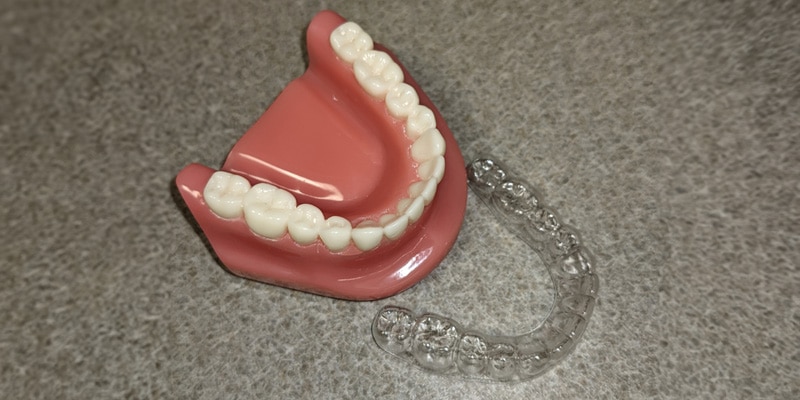
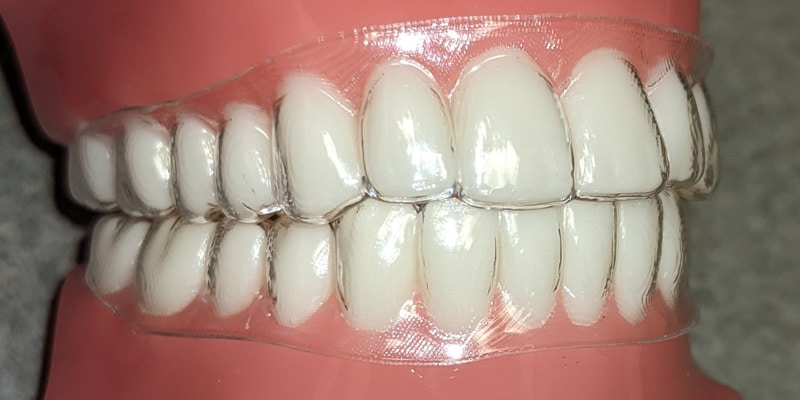
What are Orthodontic Attachments?
To place directional forces in specific directions, compositeA synthetic resin that is used for while fillings. This is what most people receive when they get fillings. in various shapes, called attachments, is bonded to the outside surface of multiple teeth. The composite is often triangular or rectangular in shape and allows for more complex tooth movements. (GPT) This allows more movement of teeth and once treatment is completed, the attachments are removed.
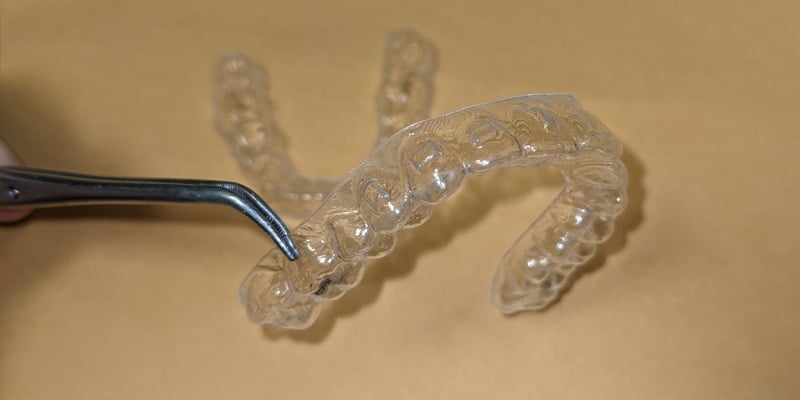
What are the Advantages of Clear Aligners?
Clear aligner treatment has a few advantages over traditional braces. Some of these advantages include simultaneous tooth movements, being removable, better esthetics, no metal, and less soft tissue damage.
Due to the nature of aligners, they can move multiple teeth at the same time which can reduce the length of treatment as compared to traditional braces. They are also removable, which makes cleaning significantly faster and easier. This is incredibly important, especially in for adolescents, to keep the teeth healthy afterwards. Aligners also look better and usually don’t use any metal which results in less of an eyesore. Also for those who active, especially those who play contact sports, the aligners deal less damage to the soft tissue. Traditional metal braces are much easier to cut the inner lips and cheeks compared to aligners.
What are the Disadvantages of Clear Aligners?
The main disadvantages of clear aligners are limited to a few: the inability for some orthodontic movements, compliance issues, and problems with bruxers also known as teeth grinders.
While aligners can move most teeth in most directions, one impossible movement is to pull an impacted tooth into the mouth. Luckily there are few indications where clear aligners cannot be used for the full duration of treatment. However your doctor may tell you that part or all of the treatment must be done with metal braces. If this is the case, you can still ask if you can switch to clear aligners after but it may incur additional cost.
Another issue is compliance, meaning that if the trays are not actually used, they cannot move anything. When a patient forgets to wear or doesn’t wear the aligners as instructed, the progress can easily fall off track.
Bruxers or teeth grinders, can also affect treatment. If the plastic trays are being squished, it can splay out the plastic and not allow for proper and consistent pressure against the teeth. It can also result in an open bite, usually between the upper front teeth and lower front teeth. Luckily there are solutions that can mitigate these problems.
What’s the Difference Between Invisalign and Clear Aligners?
Clear aligners are one of the two main forms of orthodontic treatment and Invisalign is one of the most well known brands of clear aligners. In the same way that Kleenex is a well known brand of facialThe ‘outside’ surface of the teeth that directly face either the lips or cheeks. tissue, Invisalign is one brand of amongst many. Other brands also include Sure Smile, Clear Correct, and Candid for instance however there are many more.
Most of the time ‘Invisalign treatment’ and ‘clear aligner treatment’ are referring to the same thing. At the end of the day, there are nuances between aligner companies however all aligners straighten teeth. In the hands of an experienced dentist or orthodontist, a beautiful smile can be achieved regardless of the brand used. Many brands have been used and vetted enough to provide the treatment required. Whether your dentist or orthodontist uses Invisalign, Sure Smile, or a different brand, they will be able to provide you with a new smile.
Are Direct-to-Consumer Aligners Bad?
There are some direct to consumer brands such as SmileDirectClub and Byte. While these may work well, extreme caution should be taken with direct to consumer brands. As a general rule of thumb, the oral health needs to be healthy prior to getting straighter teeth. This means addressing tooth decay or gum disease for instance. Also this style of aligners works best for mild to moderate cases.
Additionally, there may be less direct oversight from a dentist or orthodontist during the entire treatment. This can lead to damage to the teeth, gums or bones. In severe cases, surgery may be needed to reverse the damage. While this is not to say there is no place for direct to consumer aligners, each patients case should be thoroughly reviewed and vetted by a state licensed dentist or orthodontist to see if you are a good candidate.
What are the Differences Between Clear Aligners and Traditional Braces
There are many differences between clear aligner treatment and traditional metal braces with the most obvious being the materials used. Aligners do not use any metal, except in complicated cases. Traditional metal braces bond brackets on the front of the teeth and have a wire that attaches all the brackets together.
The mechanics of movement are also different, but still achieve the same end result. Traditional metal braces work by pulling teeth into alignment while aligners work by pushing teeth into the desired position to straighten teeth. This allows aligners to exert a pushing force on multiple teeth, allowing movement of multiple teeth. In many cases this can reduce the total treatment time and aligners needed.
Another difference is the removable nature of clear aligners. Although seemingly not a big deal, this difference can have huge long term effects. Many patients undergoing orthodontic treatment are adolescent teenagers, who may not have the best oral hygiene. Unlike braces, aligners are able to flossed and brushed very easily.
Many dentists have seen many patients who have had very healthy teeth prior to braces that have many cavities after straightening their teeth. Since treatment takes many months, often up to a couple years, cavities can easily form. Even though the teeth can be fixed and made healthy again, the restorations will need to be replaced multiple times over the patients life.
While aligners work well in many cases, they do have some limitations. In a handful of cases, traditional braces need to be used, even if only for a short period of time. Patients who require traditional metal braces must understand the utmost importance of hygiene. Be sure to know and understand what all your treatment options are.
How Do Clear Aligners Work?
Clear aligners work by placing light but constant pressure on teeth to get them to move slowly over time. The aligners must be worn for approximately 22 hours a day, every day and only taken out to eat and clean the trays and teeth.
This is the same principle that all orthodontic movements use. There is a fine balance between moving the teeth quickly but not so fast that complications occur. Luckily these complications don’t happen very often.
The behind the scenes work with clear aligners are significantly different than traditional metal braces. Metal braces are placed directly onto the teeth and various wires are used and placed to move the teeth. There is less prep work that is required with metal braces.
With clear aligners, much of the lab work is done digitally. After a set of models is digitized, a simulation predicting stages of movement is made. Each predicted stage is anywhere from 1 to 2 weeks worth of movement for the duration of the treatment. A set of models is then made using a 3D resin printer at each stage and a set of trays is then vacuum formed at each stage.
This is why patients switch out trays every 1-2 weeks. The new set of trays is the next set of movements and the teeth must be in the correct position before moving onto the next set of trays. Over time the aligners idealize the position and bite and can even close large gaps between teeth. After treatment is done, there are even those who opt to do teeth whitening to bring their smile to another level.
How Do You Get Clear Aligners?
There are two ways to get Clear Aligner treatment: in office treatment or direct to consumer. Again, take caution with direct to consumer options as previously mentioned. If determined to be a good candidate for clear aligners, records need to be taken.
What are orthodontic records?
Orthodontic records (GPT) are a process of taking all the necessary information to come up with a custom treatment plan. The records typically include various x-rays, including a lateral cephalometric radiograph also called a lateral ceph, teeth impressions which can be done digitally, and a handful of photographs. Most brands require some or all of these records.
These records are a ‘before’ snapshot of the facial structure and tooth position. It is vital information that is used to figure out how to safely straighten teeth and is considered the standard of care by many dentists and orthodontists. Once the teeth are straightened, often ‘after’ photographs are taken to more clearly show the improvements.
If electing a direct to consumer product, an at home impression kit is delivered that require you to take a set of molds and send them back to the company. This may require multiple impression kits if there is significant distortion in the molds. (GPT)
After orthodontic records are taken, it usually takes a few weeks to come up with a plan and make the aligners. Once they are made, modifications to the teeth via attachments or interproximal reduction (IPR) is completed and a set of aligners are given.
Once you have the trays, you need to periodically see the dentist or orthodontist to track progress. If progress isn’t tracking as it should, then modifications are made to ensure a good end result in a timely fashion.
How Much Do Clear Aligners Cost?
Depending on a few factors, clear aligners can cost anywhere from $1,500 to $7,000. The cost will vary depending on a few things including the complexity of the treatment plan, where you are getting the treatment from, and insurance coverage. Most offices and companies will have financing options to help with the cost and many offices will offer monthly payments as well.
If the treatment process requires surgery or interception orthodontics, the overall cost can increase as well. For instance patients with a bite scheme called skeletal class III (GPT), also known as an underbite or bulldog bite, may require surgery to correct the jaw size discrepancy. However these are typically for more complicated cases and many patients do not require such treatment.
Does Dental Insurance Cover Clear Aligners?
Most dental insurances will cover clear aligner treatment as it is considered a type of orthodontic treatment. The amount covered is based on a percentage of the total treatment cost and will cap out at a certain dollar amount. That benefit will usually range between $500 to $3,000 of the total cost, depending on the plan and insurance company.
Orthodontic Lifetime Coverage
Most insurance companies will have a once per lifetime rule, meaning that they will only cover will cover braces or aligners once per lifetime. This means that if you had aligner treatment done 10 years ago with Cigna or Metlife for example, they will not cover any orthodontic treatment plans today.
This rule is usually not shared between insurance companies. This means that if you had orthodontic treatment 10 years ago with Cigna, but now you have Metlife, there should be some coverage for clear aligner treatment. Be sure to ask your provider and insurance company though, as there may be nuances within your plan.
Clear Aligner Insurance Coverage Example
Let’s say you have a Delta Dental insurance plan that covers clear aligners at 50% up to $2,000 and there are three scenarios where the total cost of treatment is $3,000, $4,000, and $5,000. If the aligners are $3,000, Delta Dental will cover $1500 and leave $500 on the table. With the $4,000 plan, Delta will cover exactly half at $2,000. When the cost is $5,000, Delta will still only cover $2,000 since there is an upper limit. This changes the total out of pocket with each scenario.


